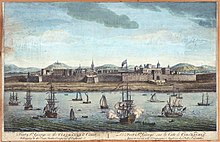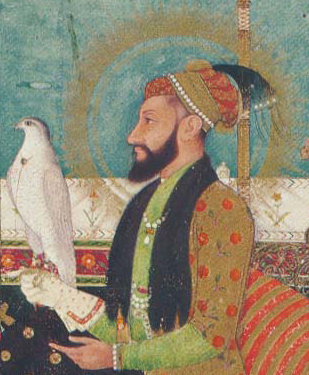
Muhi al-Din Muhammad, commonly known as Aurangzeb and by his regnal name Alamgir I, was the sixth Mughal emperor, reigning from 1658 until his death in 1707. Under his emperorship, the Mughal Empire reached its greatest extent with territory spanning nearly the entirety of the Indian subcontinent.

The Battle of Plassey was a decisive victory of the British East India Company, under the leadership of Robert Clive, over the Nawab of Bengal and his French allies on 23 June 1757. The victory was made possible by the defection of Mir Jafar, Nawab Siraj-ud-Daulah's commander in chief. The battle helped the British East India Company take control of Bengal in 1772. Over the next hundred years, they continued to expand their control over vast territories in rest of the Indian subcontinent, including Burma.

Mirza Abu'l Fayaz Qutb-ud-Din Mohammad Azam, commonly known as Azam Shah, was briefly the seventh Mughal emperor from 14 March to 20 June 1707. He was the third son of the sixth Mughal emperor Aurangzeb and his chief consort Dilras Banu Begum.

Job Charnock was an English administrator with the East India Company. He is commonly regarded as the founder of the city of Calcutta ; however, this view is challenged, and in 2003 the Calcutta High Court declared that he ought not to be regarded as the founder. There may have been inhabitants in the area since the first century CE. The High Court was right in claiming that villages that constituted colonial Calcutta were not established by Charnock or the British Raj itself, but Charnock’s ambition-driven doggedness toward setting up a East Indian Company frontier along the Eastern border of India that he could control on his own terms played a huge role in the creation of present day city of Calcutta.
Kolkata was a colonial city. The British East India Company developed Calcutta as a city by establishing an artificial riverine port in the 18th century CE. Kolkata was the capital of the British India until 1911, when the capital was relocated to Delhi. Kolkata grew rapidly in the 19th century to become the second most important city of the British Empire after London and was declared as the financial (commercial) capital of the British India. This was accompanied by the development of a culture that fused Indian philosophies with European tradition.

Shah Alam II, also known by his birth name Ali Gohar, or Ali Gauhar, was the seventeenth Mughal emperor and the son of Alamgir II. Shah Alam II became the emperor of a crumbling Mughal Empire. His power was so depleted during his reign that it led to a saying in the Persian language, Sultanat-e-Shah Alam, Az Dilli ta Palam, meaning, 'The empire of Shah Alam is from Delhi to Palam', Palam being a suburb of Delhi.

The Nawab of Bengal was the hereditary ruler of Bengal Subah in Mughal India. In the early 18th-century, the Nawab of Bengal was the de facto independent ruler of the three regions of Bengal, Bihar and Orissa which constitute the modern-day sovereign country of Bangladesh and the Indian states of West Bengal, Bihar and Odisha. They are often referred to as the Nawab of Bengal, Bihar and Orissa. The Nawabs were based in Murshidabad which was centrally located within Bengal, Bihar, and Odisha. Their chief, a former prime minister, became the first Nawab. The Nawabs continued to issue coins in the name of the Mughal Emperor, but for all practical purposes, the Nawabs governed as independent monarchs. Bengal continued to contribute the largest share of funds to the imperial treasury in Delhi. The Nawabs, backed by bankers such as the Jagat Seth, became the financial backbone of the Mughal court. During the 18th century, the Nawabs of Bengal were among the wealthiest rulers in the world.

The Carnatic wars were a series of military conflicts in the middle of the 18th century in India's coastal Carnatic region, a dependency of Hyderabad State, India. The first Carnatic wars were fought between 1740 to 1748

The provinces of India, earlier presidencies of British India and still earlier, presidency towns, were the administrative divisions of British governance on the Indian subcontinent. Collectively, they have been called British India. In one form or another, they existed between 1612 and 1947, conventionally divided into three historical periods:

Mirza Abu Talib, better known as Shaista Khan, was a general and the subahdar of Mughal Bengal. A maternal uncle to the emperor Aurangzeb, he acted as a key figure during his reign. Shaista Khan initially governed the Deccan, where he clashed with the Maratha ruler Shivaji. However, he was most notable for his tenure as the governor of Bengal from 1664 to 1688. Under Shaista Khan's authority, the city of Dhaka and Mughal power in the province attained its greatest heights. His achievements include constructions of notable mosques such as the Sat Gambuj Mosque and masterminding the conquest of Chittagong. Shaista Khan was also responsible for sparking the outbreak of the Anglo-Mughal War with the English East India Company.
William Gyfford was an English factor and Agent of Madras from 3 July 1681 to 8 August 1684 and the President of Madras from 26 January 1685 to 25 July 1687.

The Bengal Subah, also referred to as Mughal Bengal, was the largest subdivision of Mughal India encompassing much of the Bengal region, which includes modern-day Bangladesh, the Indian state of West Bengal, and some parts of the present-day Indian states of Bihar, Jharkhand and Odisha between the 16th and 18th centuries. The state was established following the dissolution of the Bengal Sultanate, a major trading nation in the world, when the region was absorbed into the Mughal Empire. Bengal was the wealthiest region in the Indian subcontinent.

The siege of Golconda was a siege of Golconda Fort between the Qutb Shahi dynasty and the Mughal Emperor Aurangzeb, occurring in January 1687, lasting 8 months. The fort was home of the Kollur Mine. The Golconda Fort was considered to be an impregnable fort on the Indian subcontinent. At the end of the siege, Aurangzeb and the Mughals entered Golconda victorious.
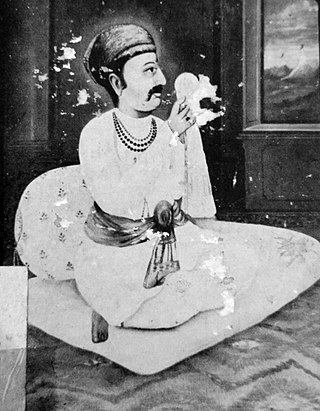
Shantidas Jhaveri was an Indian jeweller, bullion trader (sarraf) and moneylender (sahukar) during the Mughal era. He was the wealthiest merchant in the Ahmedabad city during the 17th century.

The Army of the Mughal Empire was the force by which the Mughal emperors established their empire in the 16th century and expanded it to its greatest extent at the beginning of the 18th century. Although its origins, like the Mughals themselves, were in the cavalry-based armies of central Asia, its essential form and structure was established by the empire's third emperor, Akbar. The army had no regimental structure and the soldiers were not directly recruited by the emperor. Instead, they would be recruited and fielded by Mansabdar officers.

The city of Chattogram (Chittagong) is traditionally centred around its seaport which has existed since the 4th century BCE. One of the world's oldest ports with a functional natural harbor for centuries, Chittagong appeared on ancient Greek and Roman maps, including on Ptolemy's world map. Chittagong port is the oldest and largest natural seaport and the busiest port of Bay of Bengal. It was located on the southern branch of the Silk Road. The city was home to the ancient independent Buddhist kingdoms of Bengal like Samatata and Harikela. It later fell under of the rule of the Gupta Empire, the Gauda Kingdom, the Pala Empire, the Chandra Dynasty, the Sena Dynasty and the Deva Dynasty of eastern Bengal. Arab Muslims traded with the port from as early as the 9th century. Historian Lama Taranath is of the view that the Buddhist king Gopichandra had his capital at Chittagong in the 10th century. According to Tibetan tradition, this century marked the birth of Tantric Buddhism in the region. The region has been explored by numerous historic travellers, most notably Ibn Battuta of Morocco who visited in the 14th century. During this time, the region was conquered and incorporated into the independent Sonargaon Sultanate by Fakhruddin Mubarak Shah in 1340 AD. Sultan Ghiyasuddin Azam Shah constructed a highway from Chittagong to Chandpur and ordered the construction of many lavish mosques and tombs. After the defeat of the Sultan of Bengal Ghiyasuddin Mahmud Shah in the hands of Sher Shah Suri in 1538, the Arakanese Kingdom of Mrauk U managed to regain Chittagong. From this time onward, until its conquest by the Mughal Empire, the region was under the control of the Portuguese and the Magh pirates for 128 years.
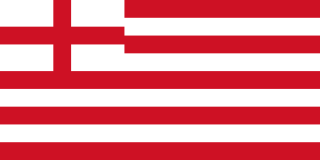
Bantam Presidency was a presidency established by the British East India Company and based at the Company factory at Bantam in Java. Founded in 1617, the Presidency exercised its authority over all the Company factories in India, including the agencies of Madras, Masulipatnam and Surat. The factors at Bantam were instrumental in founding the colony of Madraspatnam in 1639 with the Fort St. George, which later grew into the modern city of Madras. The Presidency of Bantam was twice downgraded, first in 1630 before being restored in 1634 and for the second time in 1653, when owing to the hostility of Dutch traders, the Presidency was shifted to Madras.
Gabriel Boughton was an East India Company (EIC) ship surgeon who travelled to India in the first half of the seventeenth century and became highly regarded by Mughal royalty.
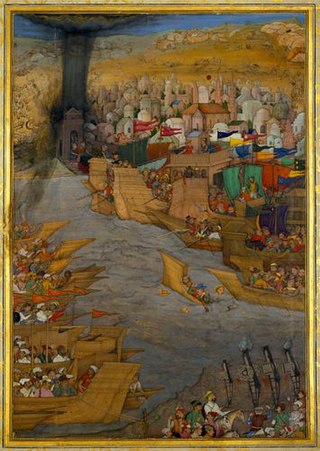
The siege of Hooghly was a military engagement between the Mughal Army and the Portuguese garrison of Fort Hooghly, the result was the capture of the fort and expulsion of the Portuguese.
Mughal conquest of Chittagong refers to the conquest of Chittagong in 1666. On 27 January 1666 AD, the Arakan Kingdom of Mrauk U was defeated by the Mughal forces under the command of Buzurg Ummed Khan, the son of Mughal Subedar Shaista Khan.

